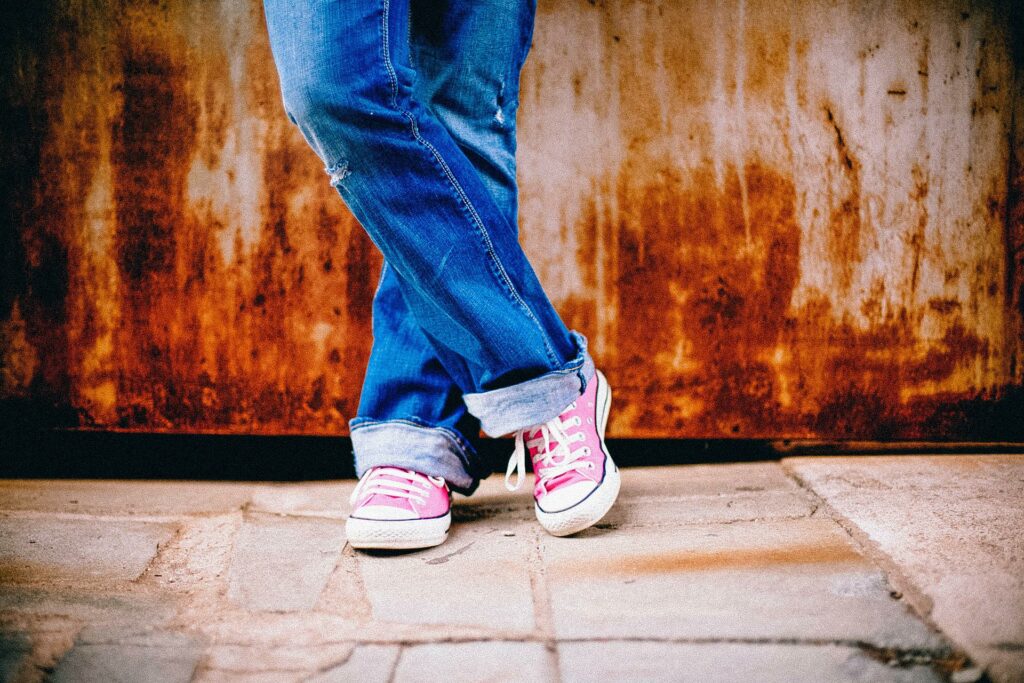Here’s How Sustainable Fashion Choices can Lower Your Carbon Footprint?
With the fashion industry becoming affordable more now than ever, people see it as a golden opportunity to fill their wardrobe with trending outfits. Our grandparents never owned as many clothes as we own today. Filing your closet with seasonal and latest outfits sounds tempting, especially when you get these clothes at a reasonable price. But, have you ever thought about the environmental impact of the current fashion industry. All it takes for you to buy a new outfit is a visit to the store. But, the process of manufacturing and transporting fashion accessories and outfits causes greenhouse gas emissions.
Do you know the textile industry needs 20,000 liters of water to produce 1kg of cotton? The worst part is that more than a hundred million people do not have access to water. While we can’t do anything about the production methods, we can avoid fabrics that need a large amount of water and chemicals for production.
The fashion industry is evolving at a fast pace. The outfits that were trending a few years ago are not sold today, even if the seller cuts the price by half. The textile industry affects the environment by discharging various hazardous chemicals during the manufacturing process. Dyeing, printing, and nearly all aspects of manufacturing clothes have an environmental impact. While the textile industry is focusing on embracing sustainable production methods, it won’t work until people change their lifestyles and habits. Your fashion choices affect your carbon footprint. You can do your part for the planet by making sustainable and healthy fashion choices.
In this post, we will walk you through a few ways to lower your carbon footprint by working on your wardrobe and lifestyle. Keep reading.

Buy Less Fashion
Even green and sustainable clothes need resources for manufacturing and transportation. The fashion industry cannot be 100% green, although some companies have taken the initiative to make their cloth production process as sustainable and environment-friendly as possible. One thing that we, as individuals, can do here is “buy less”. Do you remember your grandparent’s wardrobe? They had five times fewer clothes than we own today. You don’t have to avoid wardrobe shopping altogether, but buying fewer clothes will definitely help reduce your environmental impact.
Impulsive shopping is the biggest culprit here. When you hear about a sale, all you can think about is buying every cheap outfit you could find. The fabric, color, size, and trend don’t matter. That’s not even the worst part. You buy clothes in large volumes, wear them once or twice, and throw them in the trash.
Shop from Sustainable Fashion Brands
Instead of bulk buying, you should focus on the quality of the product. Shop from a store that offers sustainable clothes. The best part is that these clothes are available at a reasonable price (if you manage to find the right brand). If more and more people demand sustainable clothing, the fashion industry will incorporate eco-friendly approaches into their production techniques.
Organic food was not available a few years ago, but companies started producing it to cater to people’s demands. Now, it is found in nearly all supermarkets. That’s exactly how the fashion industry works. The higher demand for sustainable clothes will lead to more companies adapting to this eco-friendly clothing line.
Price-wise, sustainable clothes are not as cheaper as those low-quality outfits you find in a sale. However, quality-wise, it is much, much better than any type of outfit. Besides, there’s no point in buying clothes that you will throw away after using them once or twice. It’s better to spend more on clothes that will last, instead of buying cheaper clothes and replacing them every few weeks. A shift to sustainable clothing will not only design your wardrobe with the best fabric and high-quality clothes, but it reduces your carbon footprint.
Don’t Throw Away Your Clothes
Think twice before you throw your old clothes in the trash. Some fabrics are made of synthetic and non-biodegradable materials that will simply end up in a landfill. Instead of throwing away your clothes, donate them. If they are in good condition, donate them to people who need good clothes. Or, you can resell them on eBay or Craigslist. For example, a nice sweater or a coat that you have worn a couple of times can be easily resold on Craigslist. People will buy this coat for half its purchase price.
Another option is to send these clothes to a recycling center where they will be repurposed for new clothes. These were only a few ideas. You can re-use your unwanted or old clothes in many ways. If you know creativity, you can turn your old outfit into something new and different. People create new styles with their outdated dresses. All you need is a good tailor. Nobody will notice that you have transformed your old trousers into shorts. You could also re-use your clothes for rugs, napkins, and other household items.

Buy Clothes You Will Wear on Multiple Occasions
The 30-wear-test is a perfect way to know if you are going to wear the piece on different occasions. As mentioned earlier, people’s biggest problem is that they spend their money on the wrong pieces of clothing. You shouldn’t buy an outfit that you will wear a couple of times and throw away. Before you buy an outfit, think about the 30-wear-test.
Will you wear this outfit at least 30 times before you donate it or re-use it for another purpose? If not, do not buy it. That’s what sustainable shopping is about. You buy clothes that you will wear on multiple occasions. Invest in versatile clothing that could be styled in multiple ways, instead of buying clothes that will no longer be in fashion a couple of months later. In short, buy versatile and long-lasting clothes.
Shop Wisely
Earlier we mentioned how nearly every line of clothing is associated with a carbon footprint. Even if the manufacturer claims to offer eco-friendly items of clothing, they need resources and energy for production and transportation. However, the amount of energy and resources required for the manufacturing of vintage clothes is far lesser than other items of clothing. Vintage clothing has made the fashion industry sustainable.
With manufacturing units producing more and more vintage pieces, the fashion industry saves a considerably large volume of water. It also conserves the coal used for the production of new fibers, bleaching, dyeing, and other processes. The best part is that vintage clothing never runs out of trend. You can wear these clothes to just about any occasion and as many times as you want. You will make a statement with these pieces of clothes.
Buy Rental Outfit
Rental clothing is another way to make sustainable fashion choices. Rental clothes will not only save you money on expensive clothes, but it is a step toward a sustainable future. Plus, rental clothing makes sense when you know you will wear the outfit on one occasion only. For instance, your wedding gown will sit in your wardrobe after your wedding party.
You can’t wear a heavy gown at normal events, so it will either end up in the trash or you will donate it to someone. Either way, it is a waste of money. Likewise, if you are attending an event with a specific theme for outfits, borrow clothes from a friend or get them for rent instead of buying a new piece.

Buy Trans-Seasonal Clothes
Remember the 30-wear-test? You will not pass it if you buy clothes that work for only one season. You should shop for clothes considering the climate in your area and how many times you can wear them. For instance, there is no point in buying an entire summer wardrobe when you live in a place that receives a freezing temperature mostly. You should search for clothes that can be worn in nearly every season.
Look for jeans, t-shirts, timeless coats, and other versatile pieces of clothing that aren’t for a specific season. This small change can make a big difference to your carbon footprint. Adding versatile outfits to your wardrobe means you will have fewer, high-quality, and trans-seasonal dresses that will look stunning in all seasons. Plus, fewer clothes mean you will not have many outfits to throw in the trash. The lesser the clothes ending up in landfills from your home, the lower your environmental impact will be.
Take Care of Your Clothes
Of course, high-quality clothes last long. However, how you take care of your clothes plays a big role in determining the longevity of your wardrobe. Take care of your wardrobe, wash them regularly, and use a mild detergent to keep them looking fresh. You will have to replace your wardrobe less often if you take care of the clothes.
The fashion industry is one of the largest contributors to increasing water pollution. The good news is you can mitigate this problem by spreading awareness and educating people about sustainable fashion choices.


This is very good input and I will from now on buy better quality clothes and donate my old clothes instead of throwing it out. Thanks CN!
I agree, Michael☺️
Thanks for the good information about the fashion industry and what I can do to help with for example the 30-wear-test.